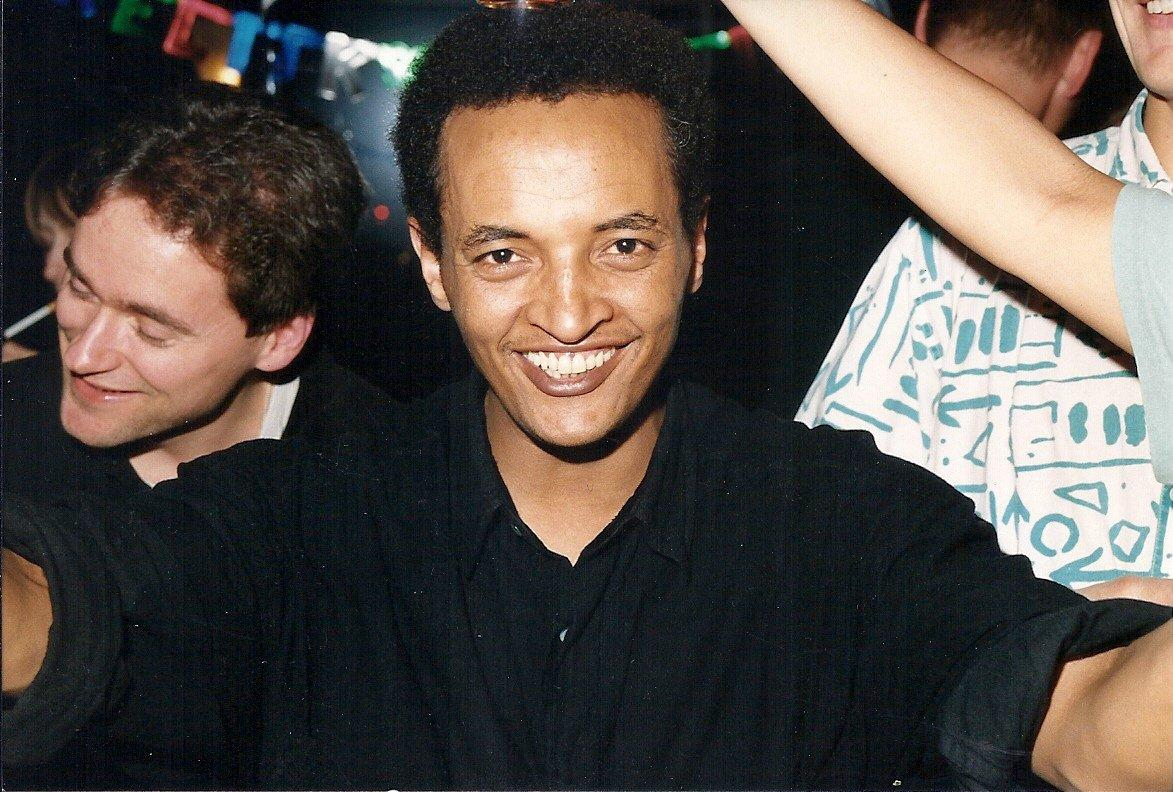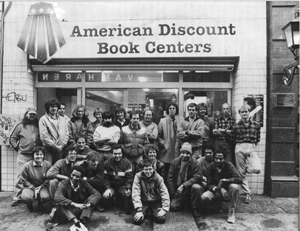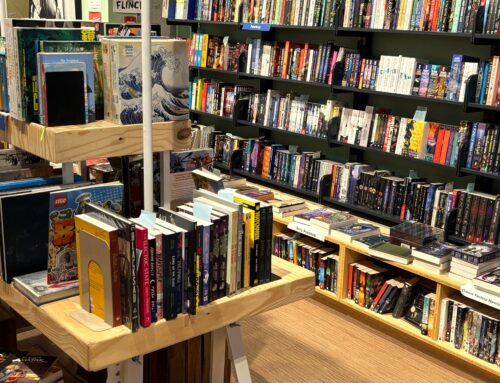Written by Lynn
One day in 1986, a man approached me at the cash desk and asked, “Wouldn’t you like to have a bigger store?”
Well, yes.
“The Mothercare company just down the street is pulling out,” he told me. “The man who agreed to take over the rent has backed out. I’m a realtor and have a tenant for half the building but am looking for another company for the other half. Are you interested?”
I talked with my husband and co-owner Avo about it, so we agreed to have a look.
Our location at Kalverstraat 158 had one sales floor of about 100m2 on the ground floor, another space up a flight of stairs and offices with an apartment above and a crawl space below, fully tiled from when it was a kitchen in centuries past.
The building located at Kalverstraat 185 (now the Nike store) had been built just 10 years previously by demolishing three small stores. It had seven floors, each around 200m2, including a finished basement, a terrace on the fifth floor and a huge heating unit on top, which sounded like an airplane taking off and never worked well.
The rent for half the building was comparable to what we were paying at the time for the smaller building, but of course, we had no idea of the utility and maintenance costs. We agreed to risk it, got out of our old agreement and planned to move on a Sunday. (In 1986, all stores on the Kalverstraat were still closed on Sundays.)
Avo supervised the deconstruction at the old address, where a team put the books into narrow stackable trays, shelf-by-shelf, and loaded them into our Volvo station wagon for the trip 100m down the street. At the other end, my team would unload the trays and put them on the assigned sales floors. Then the empty station wagon would reverse down Kalverstraat to be reloaded.

Who could drive the many trips up and back (the car in reverse) between the stores? Giorgio,* our student guard from Eritrea, volunteered. Hunched over the wheel, forwards and back, he drove the straight line slowly and carefully the whole day.
At the new address, teams brought the trays in. But there were not nearly enough books to fill the much larger space. A British customer, Lindsay Shackleton, agreed to rent half the basement for a Tearoom. She baked fresh scones daily and brewed proper English tea. The other 100m in the basement were for fiction and science fiction, the first floor was non-fiction, while magazines, new titles, travel, art and sports were on the ground floor. Later we opened the second floor for non-fiction. The third floor was our warehouse, the fourth f floor our bicycle park and the fifth floor served as our offices and canteen.
At first, the fourth floor was empty. Artist friends whitewashed the walls and hung rails, birthing the Fourth Floor Gallery exhibition space. This was a free DIY space for exhibitions and book events with shared publicity. Later, when Venus Evenings took place weekly, all the bicycles had to be moved down a flight and chairs were set up to accommodate the audience. That got tiresome. So, when our old warehouse on the Voetboogstraat came up for rent again, we started a sort of clubhouse there, the ABC Treehouse, where we could host all kinds of events and art exhibitions.
*At the end of the day, Avo asked Giorgio how long he’d had his driving license; he drove so well. “I don’t have one,” was his answer. We kid him about it to this day – he’s still at ABC 37 years later, driving books between the stores two days every week. And how did he get the job to guard the store from 7-11pm every night? Easy – his friend had the job but wanted to leave, and Giorgio was the same size – he literally fit the uniform. No job interview was necessary.
“Who are you?”
“I’m Giorgio, I’m the guard now.”
“Okay, welcome! Bring me your papers.”
After being an excellent guard at Kalverstraat 158, with an antenna for pilfering visitors as well as an ear for five or six languages, Giorgio became a cashier in the new location, then a buyer for the sports and magazine sections. Since we moved to the Spui in 2005, he’s been the magazine buyer, the driver between our stores and the fixer. Anything broken? He’ll fix it, he says, “the African way.” Which usually works just fine.

Kalverstraat 185
Moving crew




